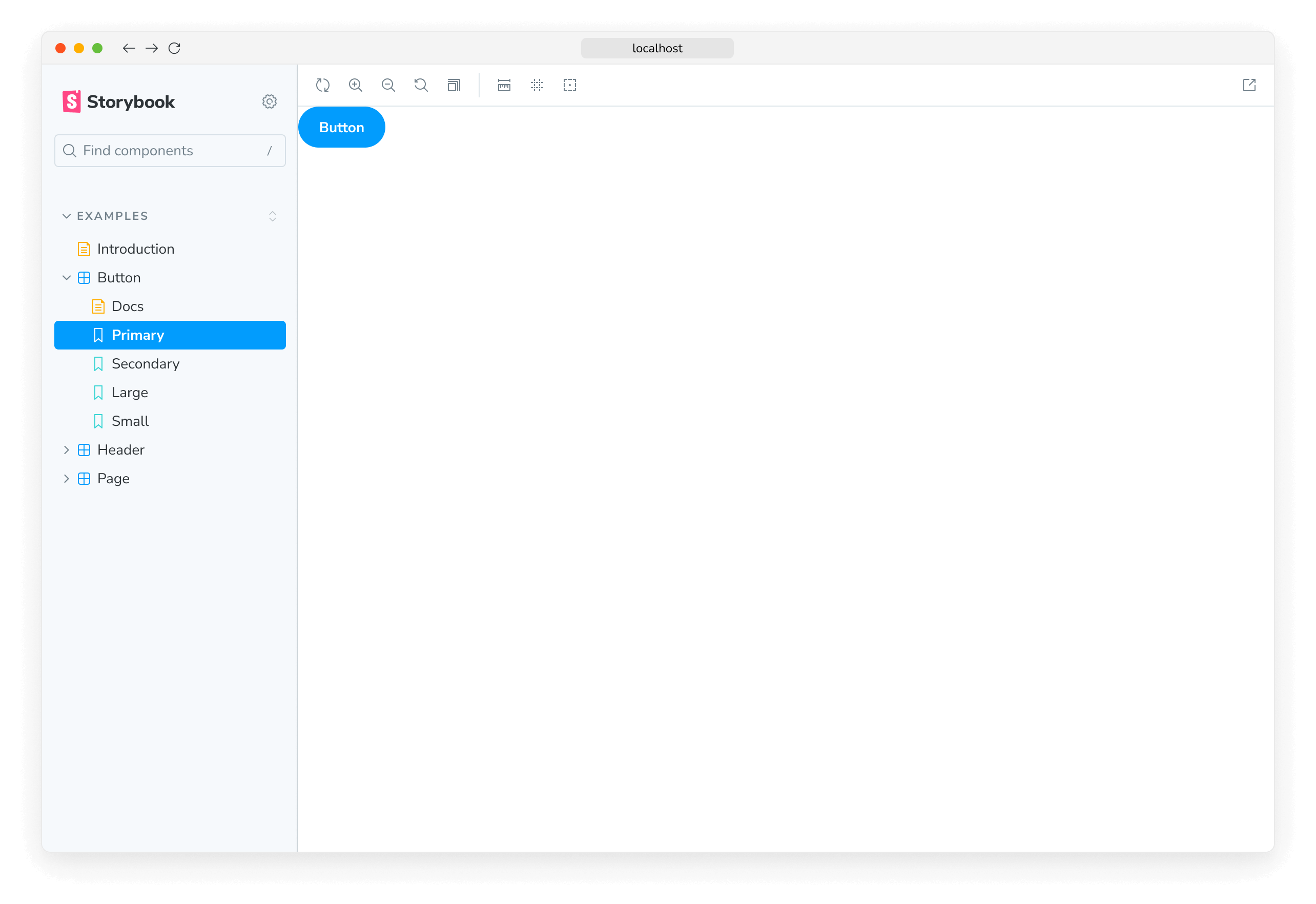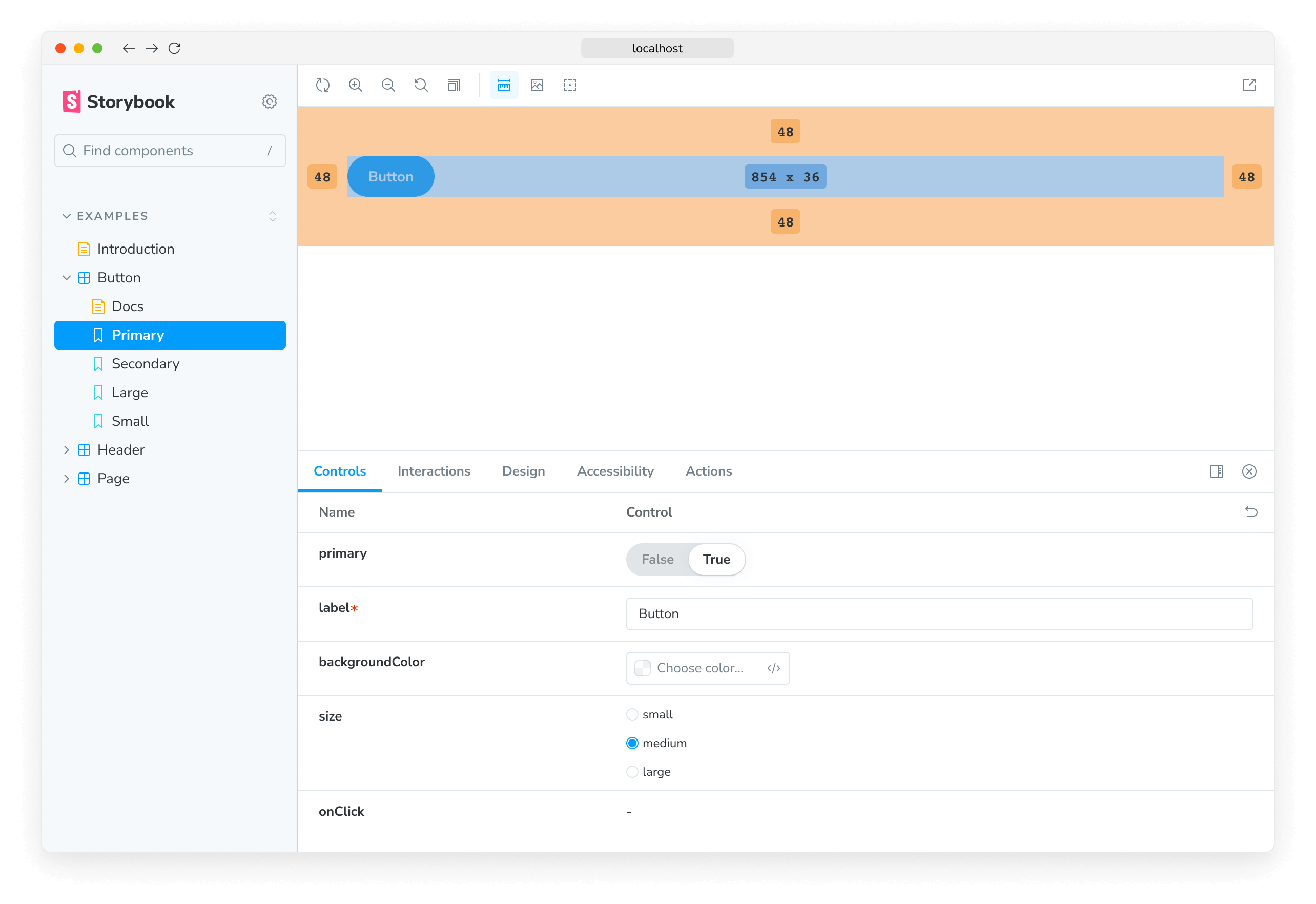Watch a video tutorial on the Storybook channel
A decorator is a way to wrap a story in extra “rendering” functionality. Many addons define decorators to augment your stories with extra rendering or gather details about how your story renders.
When writing stories, decorators are typically used to wrap stories with extra markup or context mocking.
Wrap stories with extra markup
Some components require a “harness” to render in a useful way. For instance, if a component runs right up to its edges, you might want to space it inside Storybook. Use a decorator to add spacing for all stories of the component.


“Context” for mocking
Framework-specific libraries (e.g., Styled Components, Fontawesome for Vue, Angular's localize) may require additional configuration to render correctly in Storybook.
For example, if you're working with React's Styled Components and your components use themes, add a single global decorator to .storybook/preview.js to enable them. With Vue, extend Storybook's application and register your library. Or with Angular, add the package into your polyfills.ts and import it:
In the example above, the values provided are hardcoded. Still, you may want to vary them, either per-story basis (i.e., if the values you're adding are relevant to a specific story) or in a user-controlled way (e.g., provide a theme switcher or a different set of icons).
The second argument to a decorator function is the story context which in particular contains the keys:
args- the story arguments. You can use someargsin your decorators and drop them in the story implementation itself.argTypes- Storybook's argTypes allow you to customize and fine-tune your storiesargs.globals- Storybook-wide globals. In particular you can use the toolbars feature to allow you to change these values using Storybook’s UI.hooks- Storybook's API hooks (e.g., useArgs).parameters- the story's static metadata, most commonly used to control Storybook's behavior of features and addons.viewMode- Storybook's current active window (e.g., canvas, docs).
This pattern can also be applied to your own stories. Some of Storybook's supported frameworks already use it (e.g., Vue 3).
Using decorators to provide data
If your components are “connected” and require side-loaded data to render, you can use decorators to provide that data in a mocked way without having to refactor your components to take that data as an arg. There are several techniques to achieve this. Depending on exactly how you are loading that data -- read more in the building pages in Storybook section.
Story decorators
To define a decorator for a single story, use the decorators key on a named export:
It is useful to ensure that the story remains a “pure” rendering of the component under test and that any extra HTML or components are used only as decorators. In particular the Source Doc Block works best when you do this.
Component decorators
To define a decorator for all stories of a component, use the decorators key of the default CSF export:
Global decorators
We can also set a decorator for all stories via the decorators export of your .storybook/preview.js file (this is the file where you configure all stories):
Decorator inheritance
Like parameters, decorators can be defined globally, at the component level, and for a single story (as we’ve seen).
All decorators relevant to a story will run in the following order once the story renders:
- Global decorators, in the order they are defined
- Component decorators, in the order they are defined
- Story decorators, in the order they are defined
